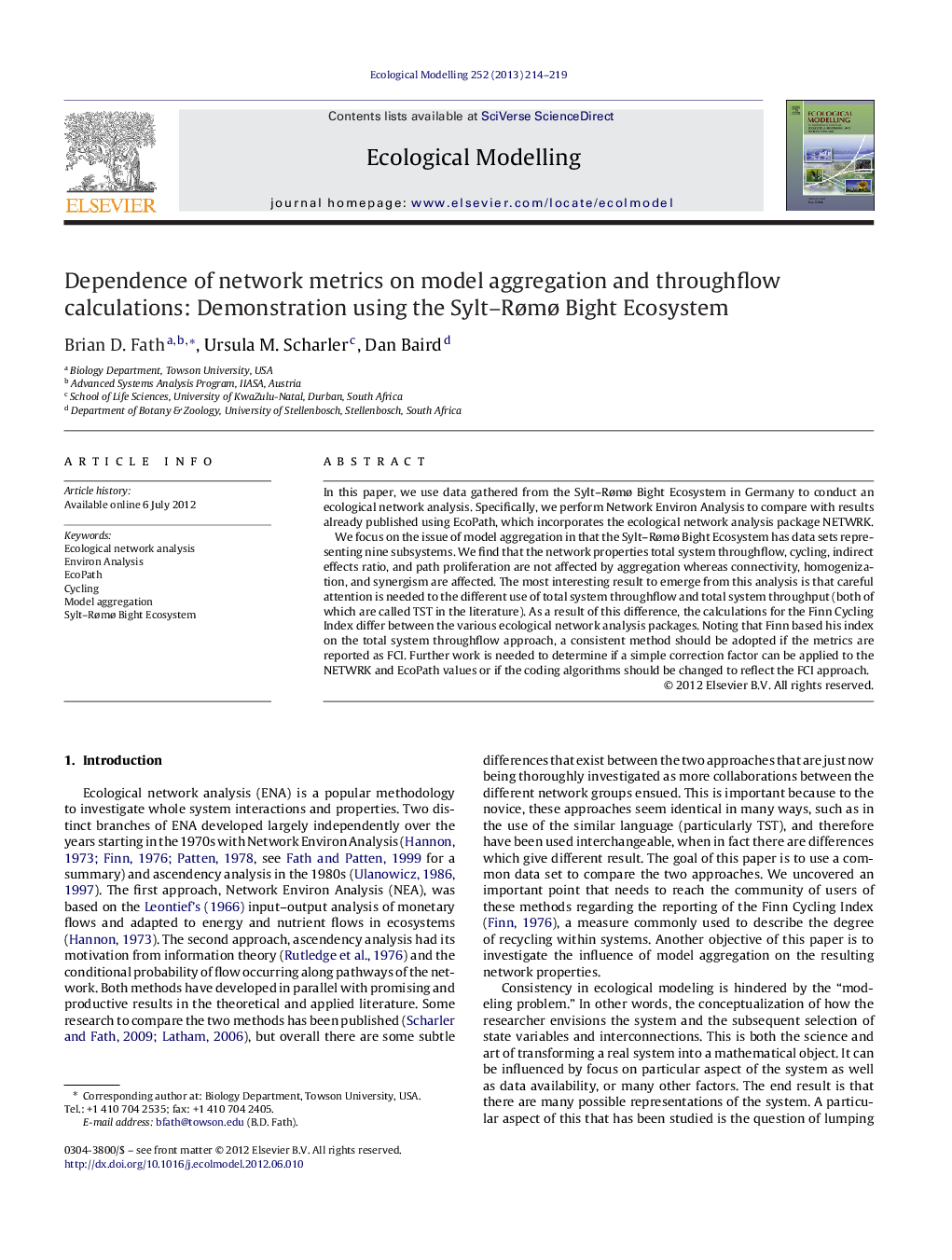| Article ID | Journal | Published Year | Pages | File Type |
|---|---|---|---|---|
| 4376203 | Ecological Modelling | 2013 | 6 Pages |
In this paper, we use data gathered from the Sylt–Rømø Bight Ecosystem in Germany to conduct an ecological network analysis. Specifically, we perform Network Environ Analysis to compare with results already published using EcoPath, which incorporates the ecological network analysis package NETWRK.We focus on the issue of model aggregation in that the Sylt–Rømø Bight Ecosystem has data sets representing nine subsystems. We find that the network properties total system throughflow, cycling, indirect effects ratio, and path proliferation are not affected by aggregation whereas connectivity, homogenization, and synergism are affected. The most interesting result to emerge from this analysis is that careful attention is needed to the different use of total system throughflow and total system throughput (both of which are called TST in the literature). As a result of this difference, the calculations for the Finn Cycling Index differ between the various ecological network analysis packages. Noting that Finn based his index on the total system throughflow approach, a consistent method should be adopted if the metrics are reported as FCI. Further work is needed to determine if a simple correction factor can be applied to the NETWRK and EcoPath values or if the coding algorithms should be changed to reflect the FCI approach.
► The Finn Cycling Index values published in EcoPath are not true FCI values. ► Total system throughput > total system throughflow. ► Model aggregation affects connectivity measures and homogenization. ► Cycling, indirectness, and synergism are invariant to network size.
